
Kim Dunphy
Kim is currently a Mackenzie Post-Doctoral Fellow at the University of Melbourne’s newly established Creative Arts Therapy Research Unit. She is focussing on researching dance movement therapy assessment, particularly the establishment of a framework of outcomes for dance movement therapy, working with colleagues in five countries. She will also be involved in establishing post-graduate training programs in dance movement therapy.
Kim's research interests are encompassed by the possibilities of culture in development, and the development of culture. She particularly focusses on the arts as an expression of culture, across the whole spectrum of arts as therapy to participation and performance. The main question her research seeks to answer is, what difference arts engagement makes, and how would we know?
Specific topics of recent publications include cultural measurement, cultural impact assessment, dance movement therapy assessment and arts participation as a social change mechanism.
Journals in which she has recently published include Impact Assessment and Project Appraisal, the American Journal of Dance Therapy, Psychotherapy and Counselling Journal of Australia and the International Journal Of Creativity And Human Development. Book chapters have appeared in collections including The Oxford Handbook of Community Music, Contemporary Perspectives in Art and International Development and Psychotherapy and Counselling: Reflections on Practice.
Kim has also been involved in developing on-line products for evaluation and assessment, including Marking the Moves, the world’s first iPad app for dance movement therapy assessment (www.makingdancematter.com.au). This has had two awards, a 2015 Award for Innovation from the American Dance Therapy Association, and award for outstanding presentation at the ACER Excellence in Professional Practice Conference in 2014. Ongoing projects include CDN’s Cultural Development Planning Framework (www.culturaldevelopment.net.au/planning) and the Prescience tool for project planning and evaluation.
Kim’s research interests are informed by earlier career stages as a practitioner: performing arts educator, dance movement therapist, community artist and local government cultural development professional. She’s also worked as a dance critic for The Age and Director of dance education company Kita, sharing performers’ Asian cultural heritage with Australian students. Currently she is also Director of Many Hands International, an Australian based non-profit organisation that has established Timor-Leste’s first regional community cultural centre in partnership with the Government of Timor-Leste. She is also President of the Dance Movement Therapy Association of Australasia.
Supervisors: Professor Felicity Baker, Co-Director National Music Therapy Research Unit, University of Melbourne and John Smithies, Director, Cultural Development Network.
Phone: +61417 038 824
Address: Melbourne, Australia
Kim's research interests are encompassed by the possibilities of culture in development, and the development of culture. She particularly focusses on the arts as an expression of culture, across the whole spectrum of arts as therapy to participation and performance. The main question her research seeks to answer is, what difference arts engagement makes, and how would we know?
Specific topics of recent publications include cultural measurement, cultural impact assessment, dance movement therapy assessment and arts participation as a social change mechanism.
Journals in which she has recently published include Impact Assessment and Project Appraisal, the American Journal of Dance Therapy, Psychotherapy and Counselling Journal of Australia and the International Journal Of Creativity And Human Development. Book chapters have appeared in collections including The Oxford Handbook of Community Music, Contemporary Perspectives in Art and International Development and Psychotherapy and Counselling: Reflections on Practice.
Kim has also been involved in developing on-line products for evaluation and assessment, including Marking the Moves, the world’s first iPad app for dance movement therapy assessment (www.makingdancematter.com.au). This has had two awards, a 2015 Award for Innovation from the American Dance Therapy Association, and award for outstanding presentation at the ACER Excellence in Professional Practice Conference in 2014. Ongoing projects include CDN’s Cultural Development Planning Framework (www.culturaldevelopment.net.au/planning) and the Prescience tool for project planning and evaluation.
Kim’s research interests are informed by earlier career stages as a practitioner: performing arts educator, dance movement therapist, community artist and local government cultural development professional. She’s also worked as a dance critic for The Age and Director of dance education company Kita, sharing performers’ Asian cultural heritage with Australian students. Currently she is also Director of Many Hands International, an Australian based non-profit organisation that has established Timor-Leste’s first regional community cultural centre in partnership with the Government of Timor-Leste. She is also President of the Dance Movement Therapy Association of Australasia.
Supervisors: Professor Felicity Baker, Co-Director National Music Therapy Research Unit, University of Melbourne and John Smithies, Director, Cultural Development Network.
Phone: +61417 038 824
Address: Melbourne, Australia
less
Related Authors
Muqtedar Khan
University of Delaware
Travis Linnemann
Kansas State University
Flavia Candusso
UFBA - Federal University of Bahia
Naim Kapucu
University of Central Florida
Benjamin Isakhan
Deakin University
Nicolas Coltice
École Normale Supérieure
Franziska Schroeder
Queen's University Belfast
Pier Giuseppe Monateri
Università degli Studi di Torino
David Seamon
Kansas State University
Claire Bishop
Graduate Center of the City University of New York
InterestsView All (32)
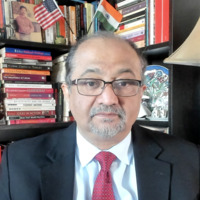
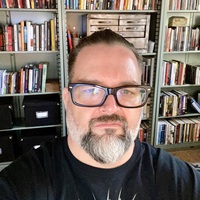
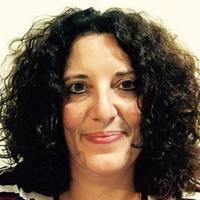
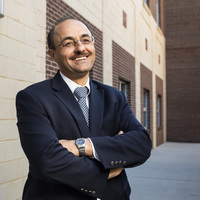





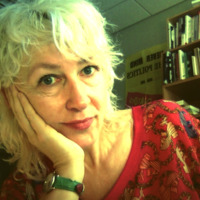
Uploads
Books by Kim Dunphy
This book brings together diverse perspectives from scholars, policy-makers and creative practitioners to explore the burgeoning field of cultural measurement and its political implications. The featured authors engage in a critical dialogue on various approaches to advocating for, planning, predicting, monitoring, evaluating, and simply understanding culture and cultural change. Chapters cover a range of theoretical and practical approaches to quantifying cultural values often considered intangible: cultural vitality, health and wellbeing, citizenship, sustainability and heritage.
This book is innovative for three main reasons. Firstly, it focuses on the factors driving the intensification of cultural measurement, including new public sector management techniques and the onset of the ‘post-cultural’ condition, in which cultural activities are seen as completely enmeshed in social, economic and environmental formations. Secondly, the book examines emerging categories and techniques of cultural measurement, such as the appearance of cultural sustainability measures or the use of participatory evaluation techniques. Thirdly, rather than presenting disconnected case studies which take the desirability and the mechanism of cultural measurement for granted, the book aims to show the usefulness of a critical focus on the politics of measurement, in which measures can be adapted and contested.
Origins and Directions for Dance Movement Therapy
Weaving the Threads: Dancing from One Century to the Next,
Sharon Chaiklin, (USA)
Laban/Bartenieff Movement Analysis:
A Vital Thread with Many Colours, Peggy Hackney (USA)
Hanny Exiner Memorial Address: Speaking In Our Own Voices:
Negotiating The Space Between, Dr Heather Hill (Australia)
The Road Ahead: Global Trends in Dance Movement Therapy Jane Guthrie (Australia)
Finding the Best Psychodynamic Support for Dance Movement
Therapy Sandra Kay Lauffenburger (Australia)
Research and Evaluation In Dance Movement Therapy
Dance movement therapy in Australia: a survey of practitioners and practice
Kim Dunphy, Tessa Hearnes and John Toumbourou (Australia)
How can dance-movement therapists describe and measure outcomes of their practice? John Toumbourou (Australia)
Intuitive Mothering: developing and evaluating a dance therapy model for mothers with postnatal depression and their vulnerable infants Elizabeth Loughlin (Australia)
One man's experience of accessing and transforming embodied traumatic memory: a dance therapy study Jennifer Helmich (Australia)
Moving On: a dance/movement therapy approach to the treatment of anxiety
Robyn Price (Australia)
Dance-movement therapy in an inpatient eating disorders program of a private psychiatric hospital Virginia Woods (Australia)
Dancing your sacred centres: Middle Eastern dance, movement therapy and the chakra system Sally Denning (Australia)
Applications of Dance Movement Therapy
Birthing the mother: dance-movement therapy in the birthing process Natalie Poole (Australia)
Self with baby: supporting the dance of connectedness in a community-based mother and baby dance therapy group Elizabeth Mackenzie (Australia)
Dance movement psychotherapy as primary treatment: a case presentation Fran Ostroburski (Australia)
The application of attachment and attunement to dance therapy Steve Harvey (New Zealand)
Dancing for peace in Angola, Africa: using movement-based expressive arts therapy as a tool for social action Dana Swain (USA)
How does the therapist effectively reach, engage and affirm Gen Y? Michelle Royal (Australia)
Surviving absence: preliminary findings on dance therapy and war trauma Rob Baum (Australia)
A tribute: two minds meeting, moving and expanding, dance movement therapy with a cancer patient Mary Builth (Australia)
Skill Development and Professional Issues For Dance Movement Therapists
Dance, stillness and paradox Jennifer de Leon (New Zealand)
Self-nurture and soul-making: dance in the wilderness: a reflection Beat"
The book includes
• discussion of the value of dance for people with disabilities, including a summary of relevant research
• information on health and fitness issues for people with intellectual disabilities
• practical aspects of running a session including strategies for group management, assessment and evaluation
• lesson plans, using a Laban-based creative dance approach, for adults, children, children in mainstream settings, people with high support needs and older adults
Appendixes include evaluation and assessment tools, a list of relevant organisations internationally and a discography of a wide variety of music. The extensive bibliography covers relevant references in community arts and arts therapies, dance and dance therapy, disability, fitness and health.
Freedom to Move is illustrated by photos of the authors' work in action.
Papers by Kim Dunphy
individu no organizasaun ne'ebé hakarak inklui atividade arte kriativu iha sira-nia abordajem promove 'moris ho ksolok' ka bemestar. Rekursu ne'e inklui diskrisaun atividade ne'ebé uza hahalok arte kriativu hanesan dansa, movimentu, meditasaun, hakerek no arte vizuál atu promove moris saudavel.
cinco séculos. Este artigo apresenta um e‐inventário de formas de expressão cultural do povo Fataluku de Timor‐Leste, expressões que são consideradas pelos seus protagonistas como criticamente ameaçadas. São 30 elementos dos 5 domínios definidos pela UNESCO que estão documentados e disponíveis online em vídeo, imagem e texto. A estatística oferecida pelo YouTube indica um número significativo de pessoas que acedem a este material, dentro e fora de Timor. O potencial das novas tecnologias para contribuir para a transmissão
e distribuição de informações culturais é evidente.
http://manyhands.org.au/our_activities/2013_projects/research_project_preservation_of_endangered_forms_of_fataluku_cultural_expr
The app is strongly based in theory, with therapeutic domains, foci and assessment indicators informed by influential ideas including Judith Hanna's universal descriptors of learning through dance, broader wellbeing theory and Laban Movement Analysis. It is based on the Framework for Dance Movement Assessment (Dunphy and Mullane, 2014), originally developed to assess DMT programs for people with intellectual disabilities.
Techniques for impact assessment of interventions on our economy, ecology and society are becoming more sophisticated, but are not yet well established within the cultural domain. This paper presents the results of a systematic literature review on applications of cultural impact assessment (CIA) internationally. Findings indicate that CIA has largely been practiced since 2002 to understand the impact of development processes on indigenous communities. While interest in CIA was also apparent in areas of public policy, particularly local government, little evidence was found of the practice actually established. A divergent understanding of CIA was found in the ‘cultural’ (funded arts and heritage) sector where it was understood as both impact on culture, but also impact of cultural activities. Only two developed tools for measuring cultural impact were found, one each for indigenous contexts and cities. Recommendations for strengthening CIA practice include establishing agreed definitions of culture and cultural
impact, and validated tools, including measurement frameworks and indicators.
Publication expected mid-2015
This book brings together diverse perspectives from scholars, policy-makers and creative practitioners to explore the burgeoning field of cultural measurement and its political implications. The featured authors engage in a critical dialogue on various approaches to advocating for, planning, predicting, monitoring, evaluating, and simply understanding culture and cultural change. Chapters cover a range of theoretical and practical approaches to quantifying cultural values often considered intangible: cultural vitality, health and wellbeing, citizenship, sustainability and heritage.
This book is innovative for three main reasons. Firstly, it focuses on the factors driving the intensification of cultural measurement, including new public sector management techniques and the onset of the ‘post-cultural’ condition, in which cultural activities are seen as completely enmeshed in social, economic and environmental formations. Secondly, the book examines emerging categories and techniques of cultural measurement, such as the appearance of cultural sustainability measures or the use of participatory evaluation techniques. Thirdly, rather than presenting disconnected case studies which take the desirability and the mechanism of cultural measurement for granted, the book aims to show the usefulness of a critical focus on the politics of measurement, in which measures can be adapted and contested.
Origins and Directions for Dance Movement Therapy
Weaving the Threads: Dancing from One Century to the Next,
Sharon Chaiklin, (USA)
Laban/Bartenieff Movement Analysis:
A Vital Thread with Many Colours, Peggy Hackney (USA)
Hanny Exiner Memorial Address: Speaking In Our Own Voices:
Negotiating The Space Between, Dr Heather Hill (Australia)
The Road Ahead: Global Trends in Dance Movement Therapy Jane Guthrie (Australia)
Finding the Best Psychodynamic Support for Dance Movement
Therapy Sandra Kay Lauffenburger (Australia)
Research and Evaluation In Dance Movement Therapy
Dance movement therapy in Australia: a survey of practitioners and practice
Kim Dunphy, Tessa Hearnes and John Toumbourou (Australia)
How can dance-movement therapists describe and measure outcomes of their practice? John Toumbourou (Australia)
Intuitive Mothering: developing and evaluating a dance therapy model for mothers with postnatal depression and their vulnerable infants Elizabeth Loughlin (Australia)
One man's experience of accessing and transforming embodied traumatic memory: a dance therapy study Jennifer Helmich (Australia)
Moving On: a dance/movement therapy approach to the treatment of anxiety
Robyn Price (Australia)
Dance-movement therapy in an inpatient eating disorders program of a private psychiatric hospital Virginia Woods (Australia)
Dancing your sacred centres: Middle Eastern dance, movement therapy and the chakra system Sally Denning (Australia)
Applications of Dance Movement Therapy
Birthing the mother: dance-movement therapy in the birthing process Natalie Poole (Australia)
Self with baby: supporting the dance of connectedness in a community-based mother and baby dance therapy group Elizabeth Mackenzie (Australia)
Dance movement psychotherapy as primary treatment: a case presentation Fran Ostroburski (Australia)
The application of attachment and attunement to dance therapy Steve Harvey (New Zealand)
Dancing for peace in Angola, Africa: using movement-based expressive arts therapy as a tool for social action Dana Swain (USA)
How does the therapist effectively reach, engage and affirm Gen Y? Michelle Royal (Australia)
Surviving absence: preliminary findings on dance therapy and war trauma Rob Baum (Australia)
A tribute: two minds meeting, moving and expanding, dance movement therapy with a cancer patient Mary Builth (Australia)
Skill Development and Professional Issues For Dance Movement Therapists
Dance, stillness and paradox Jennifer de Leon (New Zealand)
Self-nurture and soul-making: dance in the wilderness: a reflection Beat"
The book includes
• discussion of the value of dance for people with disabilities, including a summary of relevant research
• information on health and fitness issues for people with intellectual disabilities
• practical aspects of running a session including strategies for group management, assessment and evaluation
• lesson plans, using a Laban-based creative dance approach, for adults, children, children in mainstream settings, people with high support needs and older adults
Appendixes include evaluation and assessment tools, a list of relevant organisations internationally and a discography of a wide variety of music. The extensive bibliography covers relevant references in community arts and arts therapies, dance and dance therapy, disability, fitness and health.
Freedom to Move is illustrated by photos of the authors' work in action.
individu no organizasaun ne'ebé hakarak inklui atividade arte kriativu iha sira-nia abordajem promove 'moris ho ksolok' ka bemestar. Rekursu ne'e inklui diskrisaun atividade ne'ebé uza hahalok arte kriativu hanesan dansa, movimentu, meditasaun, hakerek no arte vizuál atu promove moris saudavel.
cinco séculos. Este artigo apresenta um e‐inventário de formas de expressão cultural do povo Fataluku de Timor‐Leste, expressões que são consideradas pelos seus protagonistas como criticamente ameaçadas. São 30 elementos dos 5 domínios definidos pela UNESCO que estão documentados e disponíveis online em vídeo, imagem e texto. A estatística oferecida pelo YouTube indica um número significativo de pessoas que acedem a este material, dentro e fora de Timor. O potencial das novas tecnologias para contribuir para a transmissão
e distribuição de informações culturais é evidente.
http://manyhands.org.au/our_activities/2013_projects/research_project_preservation_of_endangered_forms_of_fataluku_cultural_expr
The app is strongly based in theory, with therapeutic domains, foci and assessment indicators informed by influential ideas including Judith Hanna's universal descriptors of learning through dance, broader wellbeing theory and Laban Movement Analysis. It is based on the Framework for Dance Movement Assessment (Dunphy and Mullane, 2014), originally developed to assess DMT programs for people with intellectual disabilities.
Techniques for impact assessment of interventions on our economy, ecology and society are becoming more sophisticated, but are not yet well established within the cultural domain. This paper presents the results of a systematic literature review on applications of cultural impact assessment (CIA) internationally. Findings indicate that CIA has largely been practiced since 2002 to understand the impact of development processes on indigenous communities. While interest in CIA was also apparent in areas of public policy, particularly local government, little evidence was found of the practice actually established. A divergent understanding of CIA was found in the ‘cultural’ (funded arts and heritage) sector where it was understood as both impact on culture, but also impact of cultural activities. Only two developed tools for measuring cultural impact were found, one each for indigenous contexts and cities. Recommendations for strengthening CIA practice include establishing agreed definitions of culture and cultural
impact, and validated tools, including measurement frameworks and indicators.
Publication expected mid-2015
The factors that have contributed to Afalcya’s creative achievements are discussed. These include inspiration and assistance received from organisations and individuals in and outside of Timor, family support, age and gender of leaders, and founder Marqy’s personal characteristics of artistic talent, social and language skills, love of learning, persistence and conciliatory approach to conflict. Barriers that impede Afalcya’s potential include lack of cognisance of the contribution of creativity in sustainable development, unsupportive bureaucracy and gender related restrictions of participation for women. The potential for similar initiatives to contribute a positive future for Timorese people is explored.
This practice of participatory arts for social change is also emerging in the new island nation of Timor-Leste. Intentions of many of those programs are similar to those described above. However, there is as yet little formal scrutiny paid to their outcomes. Few programs undergo any kind of evaluation, either of participants’ experiences or their impact on the wider community. This paper presents a brief overview of findings of a research project investigating participatory arts initiatives in Timor. Outcomes for stakeholders, participants, artistic leaders, host organizations and the wider community are discussed. These outcomes were overwhelmingly perceived as positive, particularly within cultural and social domains. Project participants and leaders valued enjoyment through creative expression, stimulation of creative and analytic thinking, a renewed connection to traditional culture and positive engagement with others. Some respondents also experienced economic benefits through skill development, employment and sales of artworks. Audience members enjoyed attending and a range of learning experiences through the arts activities. Issues of concern arising from the research are also discussed. These include the potential for ineffective or harmful practice in activities where leaders are underskilled, challenges of project sustainability, particularly when activities involve foreigners, and the generally unconsidered environmental costs of activities that involve international flights.
of change’ that leaders used to guide their work, and issues arising from the data.
The Scared Cool initiative appears to provide significant cultural and social benefits for the young participants. These include development of capacity for artistic expression, creative and analytic thinking, confidence and English language skills. There were also benefits to other stakeholders including audience members. These included the enjoyment of attending a live performance, and the potential for trauma resolution and positive relationship building. This study confirms the potential for participatory arts projects to assist with the positive
development of young people in highly disadvantaged communities. In so doing, such projects can contribute to
positive social change by assisting the resolution of trauma and violence.
Five participatory arts initiatives provide case studies to which the models are applied, facilitating both examination of the usefulness of the models and the effectiveness of the initiatives. These case studies are all based in the half-island nation of Timor-Leste, an emerging democracy that faces many challenges after centuries of colonial oppression. The research demonstrates that the models can contribute to evidence-based planning approaches and effective evaluation. The theory of change models applied to the case studies indicate potential for improved planning processes of participatory arts initiatives, by facilitating alignment of organisational values, goals, intended outcomes and activities, and enabling evaluation against desired goals. The holistic evaluation model provides a viable solution to the conundrum of the purported intangible nature of the arts and its impacts, as well as calls from the human progress movement for consideration of outcomes beyond economic and social.
In applying the evaluation model to the case studies, it is apparent that these participatory arts initiatives offer significant positive outcomes for program participants, particularly in the dimensions of social, cultural, and personal well-being. Skill development and engagement with new ideas that lead to new opportunities and realisation of potential were the most significant benefits for individuals. Direct and indirect positive outcomes on the wider community and broader society were also evident, including reduced family and community disharmony and increased positive engagement with the wider world. One recurring challenge for case study organisations was the issue of appropriate leadership models that are empowering and affirming for Timorese leaders while still providing effective support and skills transfer. Factors in achievement of successful project outcomes included the use of creative participatory processes, direction by skilled leaders and modelling of inclusive and respectful relationships. Additional benefits were obtained in programs that gave credence to Timorese culture while also introducing new ideas and possibilities.
Iha inisiativa arte partisipativu lima mak sai estudu kazu no peskiza ne’e sei aplika modelu tolu ne’ebé refere iha leten ba inisiativa sira ne’e. Prosesu ne’e fasilita hodi bele avalia se modelu ne’e serve ka lae, no mós haree inisiativa nia efetivu ka lae. Estudu kazu sira ne’e hotu-hotu bazeia iha Timor-Leste, nasaun demokrátiku foun ida ne’ebé hasoru dezafiu oi-oin depois de esperiénsia kolonializmu durante tempu naruk loos. Peskiza ne’e hatudu katak modelu sira bele kontribui ba maneira planeamentu ne’ebé bazeia ba evidénsia no avaliasaun efetivu. Modelu teoria mudansa ne’ebé aplika ba estudu kazu sira indika katak iha duni potensiál hodi bele hadi’a prosesu planeamentu iha inisiativa arte partisipativu. Bele halo nune’e liu husi fasilita prosesu hodi kria aliñamentu ho organizasaun nia valor, objetivu, rezultadu ne’ebé hakarak atinji, no atividade, no mós liu husi halo avaliasaun tuir organizasaun nia objetivu. Modelu avaliasaun kompletu fornese solusaun viavel ida hodi resolve problema kona-ba arte nia karakteristika ne’ebé susar atu avalia, no mós responde ba movimentu progresu umanu nia ezijénsia katak ita presiza konsidera rezultadu seluk tan, laos haree deit rezultadu ekonómiku no sosiál.
Bainhira aplika modelu avaliasaun sira ne’e ba estudu kazu sai klaru katak inisiativa arte partisipativu sira oferese rezultadu pozitivu importante ba programa nia partisipante, liu-liu iha dimensaun sosiál, kulturál, no oinsa ema individu bele moris ho diak. Benefísiu ba ema individu ne’ebé boot liu mak dezenvolvimentu abilidade no hetan ideia foun ne’ebé lori ema ba oportunidade foun no komprensaun foun kona-ba sira rasik nia potensiál. Iha mós rezultadu pozitivu diretamente no la diretamente ba komunidade no sosiedade jerál, inklui hamenus sentimentu la kontente iha família no komunidade, no aumenta ema nia involvimentu pozitivu ho mundu. Dezafiu ida ne’ebé mosu beibeik ba organizasaun iha estudu kazu mak kestaun kona-ba modelu lideransa apropriadu ne’ebé fó kbiit no afirmasaun ba lideransa Timor-oan no mós sei fornese nafatin suporta efetivu no prosesu transfere abilidade. Fatór ne’ebé fó impaktu ba projetu nia susesu inklui uza prosesu partisipativu ne’ebé kreativu, lideransa nia abilidade diak hodi lidera, no oinsa staf sira sai ezemplu ba relasaun ne’ebé inkluzivu no respeita malu. Benefísiu seluk tan sei hetan husi programa sira ne’ebé fó valor ba Timor nia kultura no mós fó koñese ideia no posibilidade foun.
Five participatory arts initiatives provide case studies to which the models are applied, facilitating both examination of the usefulness of the models and the effectiveness of the initiatives. These case studies are all based in the half-island nation of Timor-Leste, an emerging democracy that faces many challenges after centuries of colonial oppression. The research demonstrates that the models can contribute to evidence-based planning approaches and effective evaluation. The theory of change models applied to the case studies indicate potential for improved planning processes of participatory arts initiatives, by facilitating alignment of organisational values, goals, intended outcomes and activities, and enabling evaluation against desired goals. The holistic evaluation model provides a viable solution to the conundrum of the purported intangible nature of the arts and its impacts, as well as calls from the human progress movement for consideration of outcomes beyond economic and social.
In applying the evaluation model to the case studies, it is apparent that these participatory arts initiatives offer significant positive outcomes for program participants, particularly in the dimensions of social, cultural, and personal well-being. Skill development and engagement with new ideas that lead to new opportunities and realisation of potential were the most significant benefits for individuals. Direct and indirect positive outcomes on the wider community and broader society were also evident, including reduced family and community disharmony and increased positive engagement with the wider world. One recurring challenge for case study organisations was the issue of appropriate leadership models that are empowering and affirming for Timorese leaders while still providing effective support and skills transfer. Factors in achievement of successful project outcomes included the use of creative participatory processes, direction by skilled leaders and modelling of inclusive and respectful relationships. Additional benefits were obtained in programs that gave credence to Timorese culture while also introducing new ideas and possibilities.
This research has revealed both benefits and challenges of cultural group involvement. Membership of Te Ruawhenua provides role diversity~ adding to members' lives a dimension which may have been a continuing affirming experience. It also offered opportunities for the intrinsic enjoyment of performing, the challenge of competing and pleasurable experiences that all members of a family could share. Te Ruawhenua members indicated that the group functioned like a supportive family, one which shares similar values and actively endeavours to pass them on to the next generation.
This study reinforces earlier theories that Maori cultural arts activities offer a realm of positive benefits including cultural identification, social community and personal empowennent. Te Ruawhenua seemed to give members a sense of place and belonging which may have been traditionally provided by the tribe. At the same time, it also provided a focus towards the future, dealing with current concerns and issues for group nlembers living in a western culture. In overview, frequent reference to cultural arts as offering both immediate pleasures and a deeper sense of identity and belonging was conveyed by seven Maori perfonners from a multi-generational context in Melbourne, Australia..